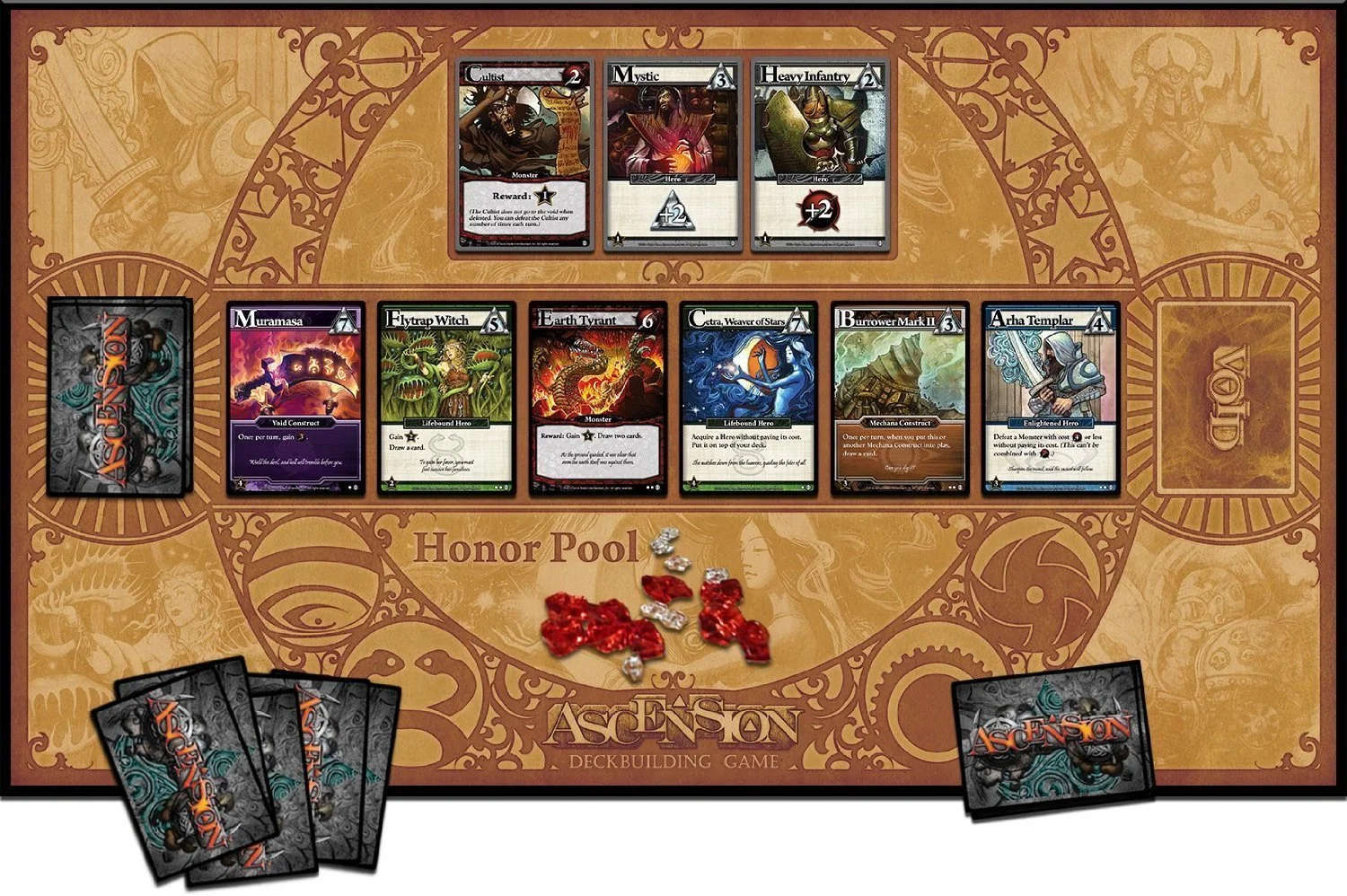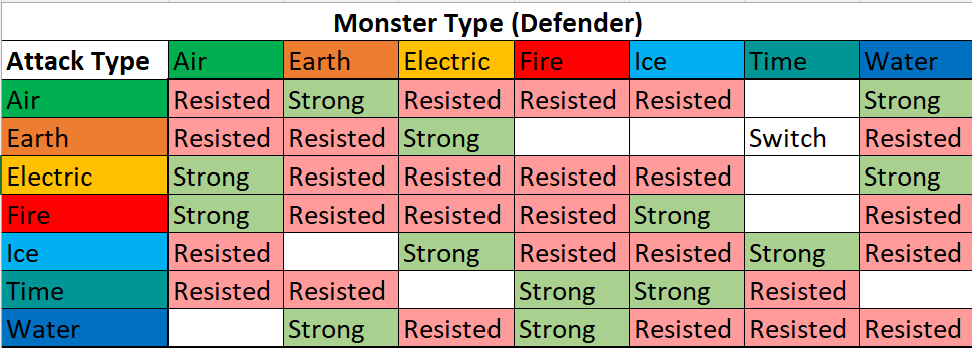Card and Board Game Interaction
I want to analyze interaction in both competitive card games and board games. I’ll admit my ulterior motive is to improve the interaction in Elemancer, because it can be a case that players are like ships passing in the night, and that needs to be addressed. I wanted to look at competitive card games mostly for familiarity and to contrast direct and indirect interaction. I also want to note I had most of this written and forgot to save, classic blunder. I’m returning to it a week later, so the timestamps may look a bit odd. Hopefully I can still convey similar points.
Let’s start with card games like Eternal, Hearthstone, and Magic: the Gathering. These games pit players directly against one another, and the goal of the game is to deplete your opponent’s life and/or deck. You can interact with these axes directly via direct damage or milling, but often the game relies on indirect interaction to open up such opportunities. Indirect interaction at a higher level encompasses destroying units/minions/creatures and discarding cards from an opponent’s hand. Both are forms of resource denial that players leverage to gain tempo or an advantageous position on the board. Hearthstone is unique by comparison because damage to minions persists across turns and the active player chooses where to direct attacks. In Magic and Eternal the defending player has control over which units trade off during combat.
Dominion has some notable direct interaction but hinges on indirect interaction. Direct interaction consists of Attack cards and other disruption (though they’re often Attack cards) as well as Reaction cards. Attack cards can put undesirable cards in your opponent’s deck (curses, copper), discard from your opponent’s hand or deck, or even steal or trash cards from your opponents. I really like the disruption introduced in the Adventures expansion that deny card draw and buying power. These are the resources of Dominion, so that’s what direct interaction will…interact with. Indirect interaction comes mainly from the shared Kingdom cards for which players are competing. Along this line, the fact that the game ends when 3 piles or the Province pile deplete means players are in control of bringing about the endgame and that is face-up information. This is the main axis of interaction within the game, as otherwise players are mostly building their own engines. The speed at which the engine comes online and the rate at which it gains VP are limited by the sword of Damocles that is ‘piling out.’
Ascension layout, highlighting the middle row of available cards
Star Realms and Ascension have similar gameplay elements in that there are four different factions and a shared ‘market’ from which players acquire cards. Both have two main resources: one for fighting and one for buying. The difference is that Star Realms engages in PvP combat (against your opponents’ bases and Authority) while Ascension is PvE (fighting monsters in the center row). In Star Realms this constitutes direct interaction, while Ascension doesn’t have that. However, they both have an important form of indirect interaction, similar to Dominion, in that all players can see and purchase cards from a shared selection. Stealing synergistic cards out from under opponents is a valid strategy, though not always tenable.
Race for the Galaxy is somewhat unique in that each turn the players choose which phases are actually played out. This leads to an interesting form of interaction through bluffing and signaling. You may have an ideal phase that you want during your turn, such as colonizing or developing, but if you expect an opponent to choose that phase you may try to gain a slight edge by sneaking in an additional phase. The bonuses for players who choose each phase can help to incentivize a straightforward gameplan but can also contribute to the mind game aspect. There is otherwise no direct interaction in the base game (Rebel vs Imperium is a different beast), as your tableau is basically your own. You can force your opponents to play sub-optimally through clever use of phases, such as forcing them to consume their resources rather than trading them for bonus cards. The fact that this is a decision at the start of each round keeps players on their toes and keeps them engaged with each other.
Ticket to Ride: Europe has many ‘solitaire’ elements in that players are trying to complete their routes, which are kept hidden from their opponents. Interaction comes in the form of competing over routes. Stations are a way to mitigate getting entirely screwed out of a route, but this is balanced by not counting for the longest route bonus. This interaction is a way to outplay opponents, similar to the mind games of Race for the Galaxy. While you’re attempting to gain the appropriate train cards for the routes you need, you can’t wait too long to claim routes. You need to balance this decision with showing too much of your intent to your opponents, who can potentially disrupt your routes.
Betrayal at House on the Hill has limited interaction until the Haunt starts. The game has its own combat system, and during the Haunt the heroes’ total stats are used as hit points, effectively. The typical goal of the traitor is to eliminate the players, putting them in direct conflict with the heroes. Players are able to trade and steal items throughout the game, which may provide stat bonuses or other desirable effects. Overall, interaction revolves around the main resources in the game: stats/health and items.
Elemancer is certainly inspired by games like Star Realms and Ascension, but the board aspect is a new element to these kinds of games. The issue Elemancer runs into is that the indirect interaction in the vein of Star Realms or Ascension is too sparse. While there are shared, face-up cards in Shrines and Temples, players don’t necessarily compete over the same piles. Without a fundamental change to the game, Elemancer can’t rely on this method of indirect interaction to satisfy the player interaction criteria.
Elemancer’s main resources are cards (in deck, hand, and discard pile) and Gems. At present I don’t want players to disrupt opponents’ Gems, as those are a precise resource that you cultivate throughout the game. If Gems become easier to acquire and I rebalance trade-in requirements to match, then I’ll revisit it. This leaves card interaction. The main avenue is via discard, which disrupts your opponent’s immediate next turn. An alternative interaction is filling your opponent’s deck with less desirable cards. At present there could be effects that give your opponents random Tier 1 cards, or I could introduce a generic ‘curse’ type of card for just such a purpose.
Preliminary Elemancer type chart
Cryomancy cares about discard and has Channel abilities that discard your opponents’ cards. What I’m going to try out is targeted discard in other Elements based on the type chart. For example, some Water cards will have a Channel ability that forces opponents to discard either an Earth or Fire card if possible. This is a way to disrupt specific Elemental builds that your opponents are pursuing. The payoffs for discarding are still solely in Cryomancy, but the discard effects are now more prevalent.
Yet another alternative in this same vein is to have a generic action that gives you access to a disruptive discard effect. Likely that would also utilize the type chart, but would be at a worse rate. For example, at the cost of discarding two cards of the same Element, each opponent discards a card weak against that Element. This would shift the effect away from specific Channel abilities and make it more readily available.
Another axis to explore is PvE combat against monsters in the game, which is the main use of damage abilities in the first place. The fact that you aren’t fighting monsters every turn means that disrupting combat isn’t as reliable a form of interaction. You could have cards that reduce an opponent’s damage during their next turn, but they might just be hunting for cards anyway. With that said, given that I want to add a long-term questline to the game, turns where opponents fight could be face-up. That could provide a good point of interaction with combat. The point is that cards with such disruption will be highly situational. Given this discussion, I think I should keep this kind of interaction open because disrupting an opponent’s boss fight in the late game can really slow them down.
Overall, the next set of playtests for Elemancer will make selective discard available to every Element. Those rates may have to be adjusted (I’m starting low) and monster hit points will have to be tweaked to an expected hand of 4 cards rather than 5. The goal is to make it so players feel they have ways to interact with their opponents and disrupt their gameplan. I will keep ‘curse’ or ‘blight’ cards as an option. Perhaps those will be available in Tier 3 while I roll out selective discard mainly in Tier 2.

